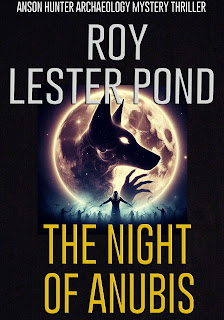 |
| British Museum scene from the Egypt adventure thriller 'Hathor's Holocaust' (2nd in the 9 novel series) |
‘A MUSEUM is a dangerous place.’
Sir Flinders Petrie, pioneer British Egyptologist, first said those words, but today Anson was thinking them.
A man had followed him to the British Museum.
Who was he?
Petrie had been thinking about another kind of danger when he’d made his famous remark about the dangers of museums. The founder of modern scientific Egyptology had been alluding to the manner in which the early Cairo museum had dealt with a royal mummy fragment found at Abydos, a single, bandaged arm, covered in jewels, the only remains of First Dynasty king Zer.
The curators took the jewels and tossed the arm way, the earliest royal mummy remains ever to come to light. It was a mummy horror story to eclipse any devised by the most febrile imagination, Anson had always thought, but right at that moment his mind was on the other worry.
Anson went up the steps and between the Ionic-style columns into the building. He passed through a crowded reception hall to arrive in the Great Court beyond.
Above the court, a tessellated glass and steel roof spread out overhead like a vast, glowing net, catching clouds, blue sky and a spirit of illumination, while the round, central building swelled like an ivory tower of learning. He crossed the clean bright space before heading left to the door of the Egyptian section.
Inside the dimmer light of the hall, a group of school children crowded around the Rosetta Stone in its glass display case. Two little black girls peered inside, their heads close together as they examined the stone, their hair braided in cornrows. An African look, he thought. It linked his thoughts to Africa’s greatest river, the Nile, and to Egypt’s irrigated fields that bounded it and made Egypt the breadbasket of the ancient world.
Excerpt from 'Hathor's Holocaust'
UPDATE: New edition of the 4th in the series "Night of Anubis".










